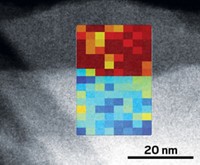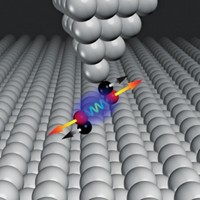Advertisement
Grab your lab coat. Let's get started
Welcome!
Welcome!
Create an account below to get 6 C&EN articles per month, receive newsletters and more - all free.
It seems this is your first time logging in online. Please enter the following information to continue.
As an ACS member you automatically get access to this site. All we need is few more details to create your reading experience.
Not you? Sign in with a different account.
Not you? Sign in with a different account.
ERROR 1
ERROR 1
ERROR 2
ERROR 2
ERROR 2
ERROR 2
ERROR 2
Password and Confirm password must match.
If you have an ACS member number, please enter it here so we can link this account to your membership. (optional)
ERROR 2
ACS values your privacy. By submitting your information, you are gaining access to C&EN and subscribing to our weekly newsletter. We use the information you provide to make your reading experience better, and we will never sell your data to third party members.
Analytical Chemistry
Second-harmonic generation with soft X-rays probes buried interfaces
Method may enable researchers to use X-ray techniques to probe interfacial chemical reactions with femtosecond resolution
by Mitch Jacoby
January 15, 2018
| A version of this story appeared in
Volume 96, Issue 3
Second-harmonic generation (SHG) is a nonlinear optical process in which two photons of a given energy interact with select types of materials and combine to form a single photon with double the original energy. The SHG process, and a closely related one known as sum frequency generation, lie at the heart of a number of spectroscopy methods based on infrared, visible, and ultraviolet laser light. As a result of spectroscopy selection rules, these nonlinear processes are particularly adept at probing interfaces, even ones hidden by many layers of molecules, as is the case for a solid catalyst in contact with high-pressure gas or an electrode in contact with a liquid-electrolyte solution. X-rays with photons in the 100-to-1,000-eV energy range, so-called soft X-rays, can provide valuable information about chemical bonding and structure with elemental specificity. But because of the lack of available light sources with the required intensity and coherence, researchers have been unable to develop an SHG version of soft X-ray interface spectroscopy—until now. In a proof-of-concept study, Richard J. Saykally and a large team of researchers working at the FERMI facility in Trieste, Italy, have demonstrated that the method can selectively probe layers of graphene inside a graphite sample (Phys. Rev. Lett. 2018, DOI: 10.1103/physrevlett.120.023901). The new technique may eventually enable researchers to use X-rays to track chemical reactions at interfaces with femtosecond resolution.




Join the conversation
Contact the reporter
Submit a Letter to the Editor for publication
Engage with us on Twitter